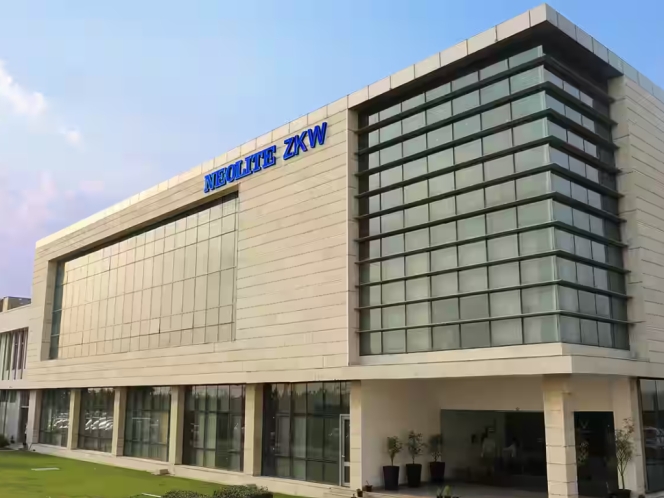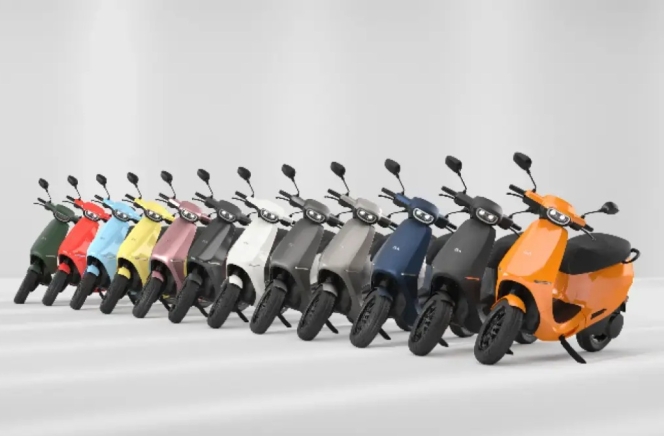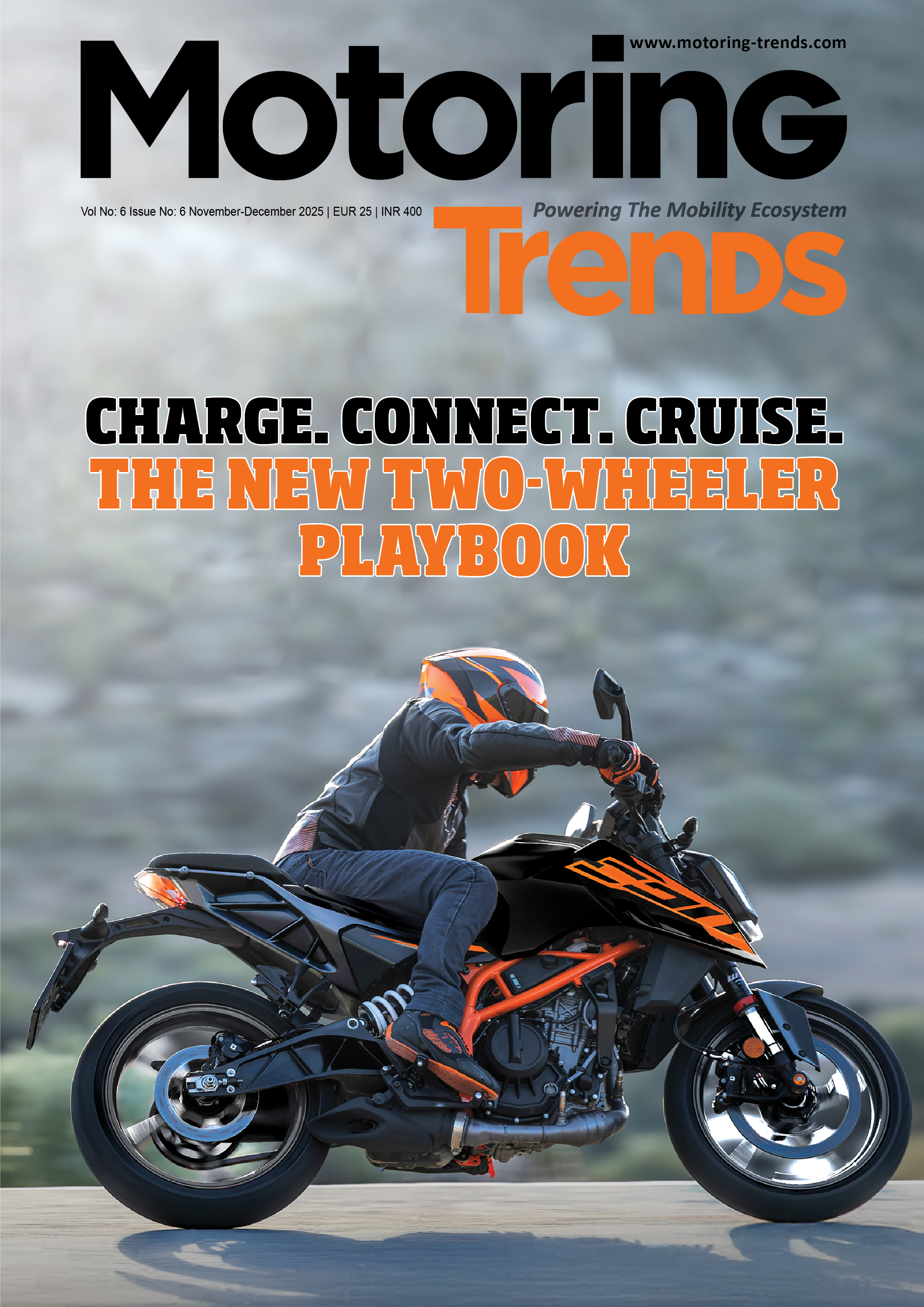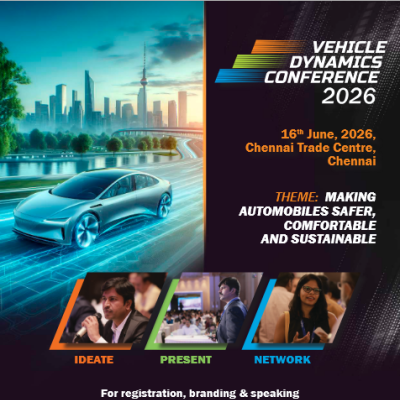- JSW MG Motor India
- Honda Motorcycle & Scooter India
- HMSI
- Ashok Leyland
- Federation of Automobile Dealers Association
- FADA
- PremonAsia
- Rahul Sharma
- C S Vigneshwar
Digital has now moved from ‘Nice to have’ to Necessity: Vinkesh Gulati
- By T Murrali
- December 19, 2020

Q: Congratulations on assuming the charge of the President of FADA. What are your immediate priorities?
Gulati: Thank you!
The past eight to nine months have been a challenging time for the entire humanity and every business sector. It has been a difficult phase for the dealer fraternity too. We have worked in very adverse conditions with zero business and zero earnings, along with a high operational cost. Post reopening of dealerships, proper decontamination and sanitisation of the entire premises, vehicles, employees, etc., have added cost to dealers who were already seeing slow sales for over 18 months in the pre-COVID era.
We are a resilient lot, and COVID has taught us to make tough decisions to ensure that our business and community survive, while offering the best of our services to customers. During my tenure, I will rigorously take up all our dealer issues at every possible platform and offer the association the finest representation, better visibility and hearing, offering a competitive business and operational environment to our fraternity.
The automobile industry has been an important driving force in India’s economic growth. Reviving the automobile industry is vital to regain lost momentum in the economy. The Government and the sector need to work together to strengthen the industry, wherein the dealer fraternity is an important element in the system.
One of the key issues which we will be working upon is improving dealer margins. Over the years, profitability has dwindled due to high costs and low operating margins.
Auto dealerships in India are operating at an average net profit level of 0.5 percent to one percent of the total turnover, which is much lower than the global standard, as internationally, dealer margins range from seven percent to 12 percent on selling price of the vehicle.
We have already written to SIAM about this, and we will further strongly urge all our OEMs to make the dealer business more sustainable and shockproof.
While we were trying to bring auto dealers under the ambit of MSME, we will up the ante further and make sure that dealers are treated at par with other businesses who are reaping the benefits of being an MSME.
Further, as a category, 2-wheelers comprise 75 percent of the sales in India, and I am working to make an exclusive 2-wheeler vertical at FADA.
This will specifically work on the nuances of 2-wheeler dealership such as sub-dealers, brokers etc. The dynamics of 2-wheeler dealers are very different from 4-wheeler dealers and hence need special attention. As they say, fortune is at the bottom of the pyramid!
FADA will continue to take up issues concerning regulatory and legislative burdens, representing the dealer fraternity across every possible platform. We will continue to reach out to our principals and build strong relationships moving ahead.
Q: FADA has been working on increasing dealer margins for ages but ends up in a stalemate. Where is the issue? How are you going to tackle this?
Gulati: Yes, this is one issue which we have been working for many years, but efforts were not made concretely until sometimes back. It’s during the 2nd Auto Retail Conclave, when we brought up the issue to our executive committee, had a panel discussion exclusively on dealer margins. There onwards, we started building momentum with continues efforts in this direction, and a few months back we also did a study on dealer margin offered by individual OEM to their respective dealers across the product lineup. This was an eye-opener for the entire fraternity as nothing of this sort was brought out in the past; this showcased that Indian dealer’s community were working on a minimal margin which was way below the global standards.
I am happy to mention that post this study, few OEMs have reviewed their dealer margin, few are in discussion with their management and respective dealer council. However, the increased margins are still not at a level which we have been asking for, but a movement has started, which is quite encouraging for the entire community.
Dealership business has a significant daily expense which is addressed by the dealer from his marginal profit. A better profit margin will help the dealer to re-invest a subsequent amount of his earning for the development and expansion of his business, which in return will add up a new business to OEMs.
We will continue to do this kind of studies in times to come and also keep negotiating with our principals as they also understand that their first customers are not in good shape and they require higher margins to sustain their business.

Q: What according to you are the skill gaps persist in the automotive industry still and how FADA is addressing this?
Gulati: Skill gap is a subject which is never-ending as technology keep changing, and we need to make a continuous effort to upgrade our manpower. In recent time, the automobile industry has gone a long way in terms of technology upgrade.
To address this change, all the three auto Associations (Automotive Component Manufacturers Association of India (ACMA), Federation of Indian Automobile Dealer Associations (FADA) and Society of Indian Automobile Manufacturers (SIAM)) have come together in tune with National Skill Development Council and created ASDC (Automotive Skill Development Council) which looks to reduce the gap in between yesterday’s skills and today’s requirement. FADA has been making a continues effort to keep our dealership manpower at par with the newer technologies.
At FADA, we are starting up with a FADA Academy which will hold courses for Dealer Principals and their Chief Experience Officers to train them in running an efficient dealership business from all aspects.
Q: With more than 50 percent of the work in purchasing any vehicle done online, where do you see the role of dealers in the future? Do you see the new trend fuelling unemployment further?
Gulati: Getting prospective customers through the online route is a growing trend. Dealers and manufacturers have been active on online platforms for quite a long time now. The pandemic is the reason for this change in consumer behaviour. Earlier, customers had to visit dealerships several times before the final buy. e.g. all loan formalities, document verification, vehicle test drive etc. These are now offered online or at the doorstep. But for the final sale, customers have to visit the dealerships to test the vehicle and take delivery.
Today every customer is well informed. The vehicle-buying experience involves several steps, right from an online search, specific automobile website visits, going through views, reviews, product comparison, collecting information from peers, social media and users and evaluating a brand, product and its services.
Only after doing all these research consumers make their decision. It is not just a transaction for the customer, but more about in getting into a relationship of trust. That is where the dealerships come into play. Every customer wants to experience the vehicle physically before closing the deal. More importantly, they want to meet up face-to-face with the dealer and satisfy themselves before committing to this high-ticket purchase.
I don’t think there is any change in the playbook, but digital has now moved from “Nice to have” to Necessity. In this COVID era, with total lockdown, digital marketing has played a significant role in boosting sales and smooth execution. Every dealership has initiated digital training of its manpower, equipping them to conduct sales coordination through a digital platform. This initiative has further enhanced its sales and service reach. Dealerships must be the most frugal and flexible link across the automobile network.
Dealers and dealerships have always been the face of the brand and will continue to be so. I don’t see any immediate challenge or threat to the dealership business. However, with companies being more aggressive and active on online platforms, this will add on to dealership engagement with the brand and the customers, helping them further to enhance their sales and service reach and experience.
 Q: What are the challenges you face with emerging technology trends like vehicle electrification?
Q: What are the challenges you face with emerging technology trends like vehicle electrification?
Gulati: I don’t see vehicle electrification as a challenge for the dealer fraternity. The dealer community has been one of the most adaptable segments of the automobile ecosystem. We have always strived to keep ourselves at par with the manufacturers, and it’s business requirement, product and services utility. The dealer business is one business which significantly depends on its skilled workforce across the offerings such as sales, aftersales, engineering, etc. With every new product or technology, the dealer in association with its OEM partner makes certain that it initiates rigorous training for its employees so that it can offer the best service to its customers on behalf of the brand.
As far as vehicle electrification is concerned, India is still at a very initial level as electric PVs still have less than 0.25 percent market share. The EV segment requires immense Government support in terms of infrastructure, subsidy, allowance, recognition, etc., to get the segment to grow. I don’t want to comment on the technicalities of the segment and its products and services. Instead, on behalf of the entire dealer fraternity, I would like to assure that as a community we are committed to offering all necessary support and service to the Government for its vision about the EV industry.
Q: Episodes like FIAT & Peugeot (decades ago) and GM & MAN Trucks (in the recent past) etc., exiting the Indian market continues, leading the dealerships to lurch. What kind of safeguard mechanisms can we have to support the dealer community?
Gulati: Setting up a global brand dealership in India is a massive cost which varies from brands to segment, size of the dealership, region, location, etc. On an average setting up a premium 2-wheeler brand dealership cost somewhere around INR8-10 crore whereas setting up a premium 4-wheeler brand requires close to INR 20 - 30 crore. It is not just the setting up of a dealership which is a cost, the operation of a dealership is also a huge which involves day to day operational cost, vehicle stocking, employee salary etc. The dealer bears all this. As you know, the dealership business operates on a very minimal profit margin; any such activity by any brand ends up leading to capital loss along with loss of jobs in the sector. And now the pandemic poses another challenge for the dealer fraternity.
For example, the recent announcement by Harley-Davidson to discontinue its manufacturing and sales operations in India has left its Indian dealers stranded. This will result in the closure of 35 Harley-Davidson dealerships, with an approximate capital loss of INR 110-130 crores, besides also leading to a job loss of around 1,800-2,000 people at dealerships.
This is the fourth instance of automobile companies exiting India in the last three years (since 2017). Earlier, General Motors, MAN Truck and UM Lohia had quit their Indian operations, leaving their dealers in a similar fix. Due to FADA’s strong intervention and the Indian Government’s full-fledged support, General Motors and MAN Trucks had partially compensated their channel partners, but the UML matter remains unresolved till date.
Had there been a Franchise Protection Act in India, brands like these would not have abruptly closed their operations, leaving their channel partners and customers in the lurch.
We are already working on a draft with our legal team and have initiated communication with other retail associations to bring the Franchise law in India, which will support the dealer fraternity in the dire situation of an exit or termination.
We would also request the Government to initiate the law on priority as this law will help level the playing field for large international and domestic automakers and dealers and also help in regulating over-dealerisation.
Q: What kind of support/guidance FADA has given to its members to tide over the current situation triggered by the pandemic?
Gulati: These are unprecedented times. Everybody is making the best efforts to emerge from it in their own way. The auto dealership is one such business which was deeply impacted by COVID-19. The auto dealership is a very marginal profit business, and we do not have large funds like car and component manufacturers have, which makes it more difficult for us to emerge from this difficult time. The industry was already struggling with a 15 to 16-month slowdown, and the lockdown has pushed the entire industry further back.
FADA has provided all possible and necessary help to its dealer members. At the time of the lockdown, FADA wrote a letter to Prime Minister Narendra Modi to apprise him about the dealers’ issues and suggesting dealership survival and demand revival initiatives. Apart from this, FADA wrote a letter to SIAM making them aware of the situation of the dealers, requesting them to review the dealer margin and extend their support so that dealer can survive these difficult times. FADA quite actively worked to protect dealers from the loss on remaining stocks of BS-IV vehicles from the ban on the sale. The association petitioned the Supreme Court to extend the dateline for sale of these vehicles. At the same time, while securing the future of dealers, FADA demanded that car makers increase the dealer margin to five percent PBT and reduce the infrastructure cost by 25 percent.
FADA conducted online training for its dealer brothers, training them to prepare for maximum work with limited resources. (MT)
Neolite ZKW Lightings Files For INR 6 Billion IPO
- By MT Bureau
- December 30, 2025

Haryana-headquartered Neolite ZKW Lightings, an automotive lighting manufacturer, has filed a Draft Red Herring Prospectus (DRHP) with the Securities and Exchange Board of India (SEBI) for an initial public offering (IPO).
The IPO comprises a fresh issue of equity shares worth up to INR 4 billion and an offer for sale (OFS) of INR 2 billion by existing shareholders, including Rajesh Jain, Neokraft Global Private and ZKW Group.
The company intends to allocate the net proceeds from the fresh issue to expansion and financial goals. This includes a new greenfield facility at an estimated investment of INR 1.5 billion in Kancheepuram, Tamil Nadu. An estimated INR 790 million towards plant, machinery and electronic expansion at current sites. Furthermore, INR 650 million towards repayment or prepayment of borrowings.
Founded in 1992, Neolite ZKW holds a 34.43 percent market share in India's commercial vehicle lighting segment for FY2025. The company maintains a strategic alliance with the ZKW Group, a subsidiary of LG Electronics.
The company operates three manufacturing units in Bahadurgarh and Pune, serving over 40 OEMs including Tata Motors, Stellantis and Daimler. Its portfolio includes 830 SKUs, with a focus on LED and electric vehicle (EV) lighting solutions.
For FY2025, the company reported INR 5.12 billion in revenue, of which exports contributed 55.08 percent share. The net profit for FY2025 came at INR 528.24 million, as against INR 155.85 million in FY2023. The order book as of 31st October 2025, stands at INR 1.71 billion.
At present, the company exports to over 50 countries, including regions in North America and Western Europe, positioning it as a significant Indian exporter of automotive components.
NHAI And Vertis Infrastructure Deploy Truck Mounted Attenuators For Highway Safety
- By MT Bureau
- December 27, 2025
Officials from the National Highways Authority of India (NHAI) and Vertis Infrastructure Trust have introduced Truck Mounted Attenuators (TMAs) to improve safety in highway work zones. The technology is designed to protect road workers and motorists in high-speed traffic environments.
Work zones currently represent high-risk areas on the Indian road network due to vehicle speeds and limited protective buffering. TMAs serve as a standard safety solution in the US and Europe and are now being scaled across Indian national highway projects.
A truck-mounted attenuator is an impact-absorbing crash cushion fitted to the rear of service vehicles. Its primary functions include:
- Energy Absorption: In a rear-end collision, the unit absorbs the kinetic energy of the impacting vehicle.
- Controlled Deceleration: The system brings the vehicle to a halt in a manner that reduces the risk of fatal injuries to occupants and workers.
- Track Record: Since initial testing on Indian roads in 2021, the technology has been credited with saving more than 100 lives.
The current rollout consists of 20 TMAs. Eight units were inaugurated during the launch event, which included a live demonstration and technical walkthrough. The remaining 12 units are scheduled for delivery within the next ten days.
Ankit Yadav, NHAI, said, “NHAI aims to move towards zero-fatality corridors across national highways. The adoption of technologies such as Truck Mounted Attenuators plays a critical role in improving work-zone safety and reducing avoidable loss of life.”
Dr. Zafar Khan, Joint Chief Executive Officer, Vertis Infrastructure Trust, said, “Our effort has always been to bring practical, globally proven safety solutions to Indian roads. Reaching the TMA stage is about protecting people working in some of the most vulnerable conditions on highways.”
The initiative forms part of a broader strategy to integrate safety technology into India's infrastructure growth, prioritising the reduction of accidents in active construction and maintenance zones.
- Maruti Suzuki India
- MIT Institute of Design
- Association of Designers of India at VIT
- Strate School of Design
- Hisashi Takeuchi
- Design Challenge
Maruti Suzuki India Concludes First Design Challenge For Students
- By MT Bureau
- December 26, 2025

Maruti Suzuki India, the country’s largest passenger vehicle manufacturer, has completed its first Design Challenge, a competition involving more than 400 students from 70 design institutes. Participants were tasked with designing a compact car, focusing on mobility solutions for the Indian market.
Teams from the MIT Institute of Design (Pune), the Association of Designers of India at VIT (Vellore) and the Strate School of Design (Bengaluru) secured the top three positions. The winning teams received cash prizes and six-month internships with the Maruti Suzuki design department.
The competition consisted of four evaluation rounds. The initiative is intended to provide students with exposure to the automotive industry and professional design environments.
The top 3 teams were awarded internships to work alongside company designers on future models. The next 7 teams received gift vouchers and potential internship opportunities pending further assessment. The challenge included students from both Indian and global design institutions.
Hisashi Takeuchi, Managing Director & CEO, Maruti Suzuki India, said, “India is a land of immense talent and innovation, with creativity thriving across every field. At Maruti Suzuki, we were already engaging with young start-ups to find mobility solutions. With the Maruti Suzuki Design Challenge, we expanded our open innovation efforts to provide a suitable platform to young designers where they gain real-world industry experience in automobile design. As design plays a pivotal role in shaping customers’ decision-making, it is vital to engage with young minds who bring fresh perspectives and challenge conventional thinking. The Maruti Suzuki Design Challenge reflects our commitment to cultivate automotive design talent and co-create future-ready mobility solutions with young India.”
The project forms part of the company's ‘open innovation’ strategy, seeking to integrate external perspectives into its vehicle development process.
Ola Electric Receives INR 3.66 Billion In PLI-Auto Incentive For FY2025
- By MT Bureau
- December 25, 2025

Bengaluru-based electric vehicle maker Ola Electric has received a sanction order from the Ministry of Heavy Industries for incentives totalling INR 3.66 billion. The payment is granted under the Production Linked Incentive (PLI) Scheme for Automobile and Auto Components for FY2024-25.
The incentive relates to the Determined Sales Value for the period and will be disbursed through IFCI, the financial institution appointed by the government for the scheme.
The PLI-Auto Scheme is an initiative by the Government of India designed to increase domestic manufacturing and the adoption of advanced automotive technologies. Ola Electric’s eligibility for the claim is based on its vertical integration and localisation of electric vehicle (EV) components.
“The sanction of INR 3.66 billion under the PLI-Auto Scheme is a strong endorsement of Ola Electric’s manufacturing capabilities and our commitment to building world-class EV technology in India. This incentive recognises our sustained efforts in scaling domestic production, deepening localisation, and driving innovation across the electric mobility value chain. We remain committed to supporting the Government of India’s vision of making India a global hub for advanced automotive manufacturing and clean mobility,” said the company in a statement.






Comments (0)
ADD COMMENT